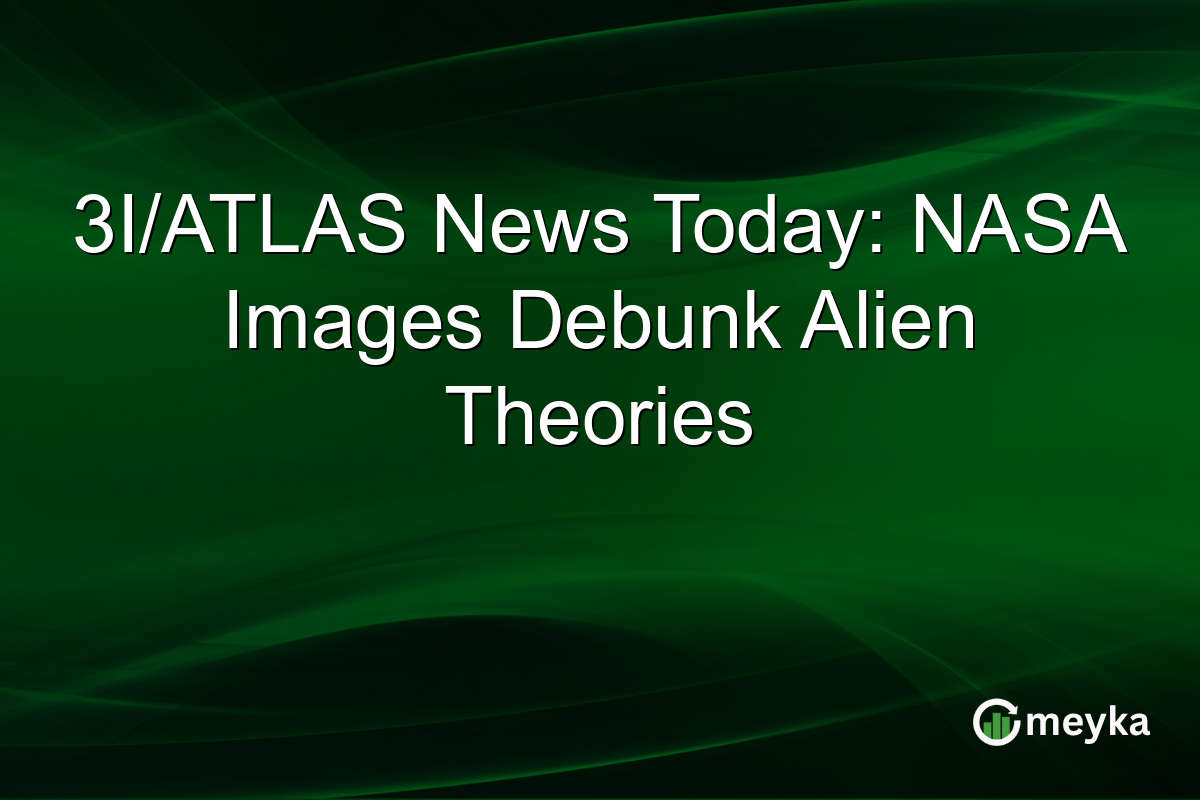3I/ATLAS News Today: NASA Images Debunk Alien Theories
NASA has released stunning images confirming the 3I/ATLAS comet as a naturally-occurring interstellar object, dismissing the alien spacecraft theories that created much buzz. The 3I/ATLAS is only the third known interstellar comet, following 2I/Borisov and ‘Oumuamua. Its entry has captivated both scientists and the public, underlining the significance of interstellar studies in unraveling the mysteries of our cosmos.
What is the 3I/ATLAS Comet?
The 3I/ATLAS comet is a rare interstellar object, traveling through our solar system from beyond the stars. Named 3I for being the third interstellar visitor detected, this comet is recognized for its unique trajectory and composition. Unlike typical solar system comets, interstellar comets have traveled vast distances, providing critical insights into the chemical makeup of other solar systems.
Previously, some speculated that 3I/ATLAS might be an alien spacecraft due to its unusual path. However, NASA’s recently released images conclusively identify it as a natural object, laying these theories to rest.
NASA’s Groundbreaking Images
NASA’s images have become pivotal in understanding the nature of the 3I/ATLAS comet. Captured using advanced technology, these images highlight the comet’s solid nucleus and surrounding coma, typical of icy bodies traveling through space.
These visual confirmations are vital. They not only debunk alien spacecraft rumors but also showcase the comet’s fascinating structure. NASA’s clear imaging reaffirms the power of technology to provide new layers of understanding, pushing the boundaries of current space research.
Read more about this discovery from NASA’s own documentation here: NASA’s 3I/ATLAS Facts.
The Importance of Studying Interstellar Objects
Interstellar comets like 3I/ATLAS offer crucial insights. Unlike solar comets, they’re unaltered by solar radiation, making them pristine astronomical artifacts. This shows how they can provide a glimpse into the conditions and compositions of their originating star systems.
According to researchers, analyzing the 3I/ATLAS could unlock new understandings of how solar systems form and evolve. It can redefine our knowledge of celestial mechanics and chemistry. For the scientific community and beyond, this knowledge is invaluable, enhancing both theoretical models and practical space exploration strategies.
Final Thoughts
The confirmation of 3I/ATLAS as a natural interstellar comet emphasizes the intricate nature of our cosmos. NASA’s images play a crucial role, delivering undeniable proof amidst speculative theories. This discovery strengthens the position of interstellar studies as essential to expanding our cosmic knowledge.
For businesses and investors, these developments highlight the potential in the space technology sector. Companies investing in advanced telescopic and imaging technologies could find rising interest and demand.
Leveraging tools like Meyka’s AI-powered platforms can provide valuable, real-time insights into such emerging fields. Staying informed and adaptable is key in this rapidly evolving scientific and business landscape. With space exploration at the forefront, informed speculation and calculated investments could yield substantial returns.
FAQs
3I/ATLAS is an interstellar comet, one of only three known to have visited our solar system. Its natural composition and unique trajectory offer insights into the chemical makeup of foreign star systems.
By releasing detailed images of the comet, NASA provided clear evidence of its natural composition, putting to rest any alien spacecraft theories. These images show typical features of icy bodies in space.
Interstellar comets are pristine, unaltered by solar radiation, holding valuable information about distant star systems. They help scientists understand how solar systems form and evolve, offering insights beyond what local solar system comets provide.
Disclaimer:
The content shared by Meyka AI PTY LTD is solely for research and informational purposes. Meyka is not a financial advisory service, and the information provided should not be considered investment or trading advice.






